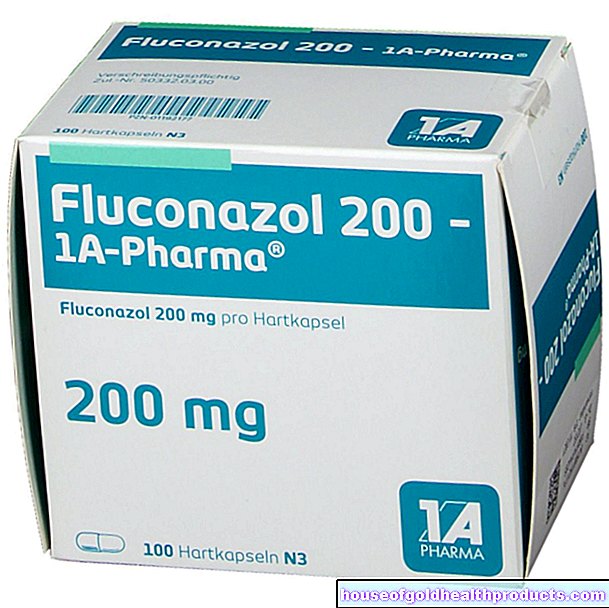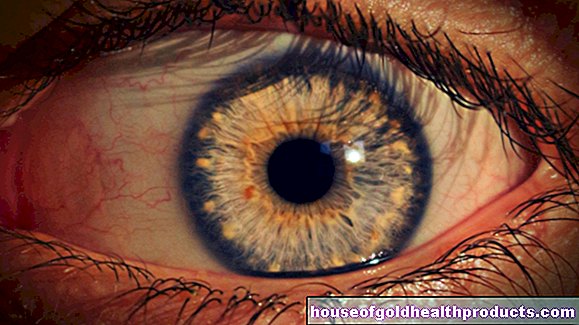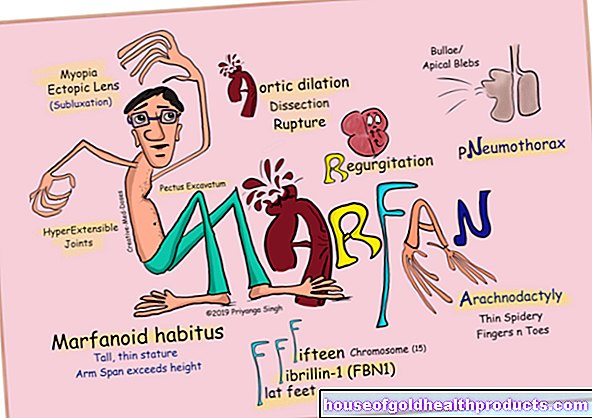Cardiovascular diseases
The term cardiovascular diseases includes all diseases of the heart and blood vessels. Doctors also speak of cardiovascular diseases. They appear in many ways and range from high blood pressure, arteriosclerosis and cardiac arrhythmias to heart failure and heart attacks. Find out the most important facts about cardiovascular diseases, how you can recognize them and how you can reduce your risk of disease.
What are cardiovascular diseases?
Doctors call all diseases of the heart and blood vessels cardiovascular diseases.
Some are the result of a weak heart muscle, others that of a disturbed blood flow in the heart itself. Disturbed transmission of stimuli in the heart muscle tissue, constrictions in the coronary vessels or occlusions in the peripheral blood vessels can also impair the functioning of the cardiovascular system.
If left untreated, they are usually associated with reduced physical performance and lead to further secondary diseases. In the western industrialized nations they are the most common cause of death. Every second death is due to advanced cardiovascular disease.



What cardiovascular diseases are there?
Cardiovascular diseases range from heart muscle inflammation to cardiac arrhythmias to a heart attack. The following are particularly common:
high blood pressure
High blood pressure (hypertension) is the number 1 cardiovascular disease in Germany. It is permanently increased in around a third of adults. High blood pressure is present as soon as a value of 140/90 mmHg is exceeded at rest. Hypertension itself is usually not acutely dangerous.
However, prolonged, permanently elevated blood pressure causes serious secondary diseases - such as damage to organs such as the heart, the brain and the kidneys. It is particularly problematic that high blood pressure is usually not noticeable. Many sufferers therefore have no idea of their illness.


Coronary heart disease
Coronary arteries supply the heart muscle with oxygen. With coronary heart disease (CHD) constrictions develop in these blood vessels. They are caused by accumulated blood lipids, blood clots and clumped connective tissue components. This "vascular calcification" (arteriosclerosis) reduces the diameter of the affected blood vessels. This worsens the blood flow and thus the optimal supply of the heart muscles with oxygen.


Heart attack
A heart attack (myocardial infarction) is the result of an extreme deficiency in the supply of oxygen to the heart muscles. The interrupted oxygen supply is usually the result of a blocked coronary artery. The heart muscle is then no longer adequately supplied with oxygen. It can no longer do its job properly and it dies. A heart attack is usually preceded by a long-lasting coronary heart disease.


Heart failure
Doctors also refer to the weak heart as heart failure. The heart is unable to carry the full amount of blood. Due to the reduced “pumping power”, the body is not supplied with sufficient blood. The consequences can be shortness of breath and limited (general) performance. Serious symptoms such as water retention in the lungs are also possible.


Myocarditis
In what is known as myocarditis, the heart muscle becomes inflamed. Usually this is the result of an infectious disease. The disease is usually not limited to the muscle cells of the heart, but also extends to the surrounding coronary arteries.
The heart muscle tissue is involved in the formation and transmission of electrical stimuli - that is, in the heartbeat itself. Myocarditis can therefore cause cardiac arrhythmias. In the long run, it often leads to cardiac insufficiency. At the beginning, however, an inflammation of the heart muscle often causes no or only very mild symptoms.


Inflammation of the lining of the heart
If the inner lining of the heart (endocardium) becomes inflamed, doctors speak of endocarditis. The endocardium lines the heart cavities and the portion of the arteries and veins close to the heart. The heart valves also consist of folds of the endocardium. If they ignite, they can be permanently damaged.

Valvular heart disease
Doctors refer to a malfunction of one or more heart valves as a heart valve defect. Since the heart valves can no longer close completely or can no longer open completely, the blood flow inside the heart is disturbed.
Heart valve defects can be congenital or develop due to an illness. Typical symptoms are shortness of breath, dizziness, or palpitations. Most of the time, however, such malfunctions are symptom-free. If left untreated, they result in cardiac insufficiency. Heart valve defects can be treated surgically.


Arrhythmia
Doctors call a cardiac arrhythmia a phenomenon in which the heartbeat deviates from its typical heart rate. The heart can beat too fast (tachycardia), but also too slowly (bradycardia). The reason for deviating heart rhythms is a disturbed transmission of stimuli in the heart muscle tissue.There are therefore disturbances in the formation of electrical impulses that trigger the heartbeat.


Atrial fibrillation
Atrial fibrillation is a particularly common form of arrhythmia. The heart beats irregularly - it “stumbles”. Most of those affected do not notice the irregular heartbeat - others, on the other hand, feel restless and weak.
The risk of developing atrial fibrillation increases with age. Atrial fibrillation is not acutely life-threatening, but if left untreated it is associated with an increased risk of stroke. Long-term high blood pressure promotes atrial fibrillation.

Pericarditis
If the pericardium becomes inflamed, doctors also speak of pericarditis. Severe chest pain is typical of pericarditis. In the course of the disease, tissue fluid often collects in the layers of the pericardium - a so-called pericardial effusion occurs. In rare cases, thickenings or calcifications also form, which significantly limit the function of the heart.

Cardiomyopathy
Cardiomyopathy is a disease in which the (tissue) structure of the heart muscle changes. The heart chambers gradually enlarge. The trigger can (among others) be a previous inflammation of the heart muscle (myocarditis) or an occluded coronary artery (coronary artery disease).
The subsequent pathological dilation of the heart results in a reduced pumping capacity of the heart. The body tries to compensate for this - the heart muscle grows and thickens. This in turn restricts the mobility (flexibility) of the heart muscle and the pumping function again, so that ultimately cardiac insufficiency can develop.

Peripheral arterial disease
Peripheral arterial occlusive disease (PAD) is a chronic circulatory disorder of the extremities. A narrowing (stenosis) or an occlusion of the supplying arteries (arteriosclerosis) means that less blood reaches certain areas in the legs. As a result, the area they serve does not get enough oxygen and nutrients. This irregular supply of blood causes typical symptoms such as pain and weakness, but also cold and pale skin.


Functional heart problems
Functional heart problems are heart problems that are primarily not related to impaired heart function. This includes, for example, heart problems due to persistent stress, fear or insecurity. In technical jargon one speaks of psychosomatic complaints. In those affected, they manifest themselves, for example, through chest pain or a pronounced feeling of illness - although these patients have a healthy heart.
Cardiovascular diseases from A to Z
A.- AV block
- Angina pectoris
- Aortic aneurysm
- Coarctation of the aorta
- Aortic stenosis
- arteriosclerosis
- high blood pressure
- Broken Heart Syndrome
- Dilated cardiomyopathy
- Endocarditis
- Extrasystoles
- Pericarditis
- Heart failure
- Myocarditis
- Cardiac neurosis
- Cardiac arrhythmias
- Hypertensive crisis
- Hypertrophic cardiomyopathy
- Hypoplastic left heart syndrome
- Ventricular fibrillation
- Cardiomyopathy
- Coronary heart disease
- Sudden cardiac death
- pre-eclampsia
- Pulmonary hypertension
- Sick sinus syndrome
- Ventricular septal defect
- Atrial flutter
- Atrial fibrillation
- WPW syndrome
What are the risk factors for cardiovascular disease?
A number of risk factors are known that reduce the pumping capacity of the heart or damage the blood vessels. The most important risk factors for cardiovascular disease include:
- (chronic) high blood pressure
- Diabetes mellitus
- Lipid metabolism disorders and severe overweight (obesity)
- Unhealthy diet
- smoking
- Physical inactivity
The earlier and more consistently you take action against lifestyle-related risk factors, the lower your risk of developing high blood pressure, heart failure or coronary heart disease.
General risk factors - age, gender and predisposition
In addition to lifestyle-related influences, there are also general risk factors. In other words, those that are genetically predisposed or develop as a result of the natural aging process. They increase the individual risk of cardiovascular diseases. Gender also has an impact: men are more likely to develop cardiovascular disease than women.
How do you recognize problems of the heart?
Since in the early stages of cardiovascular diseases mostly unspecific symptoms occur, those affected often do not recognize the signs or do not consider them to be threatening.
However, if cardiovascular diseases remain undetected for a long time - and therefore untreated - there is a risk that the heart muscle and other organs will be seriously damaged.
The most noticeable signs of heart problems are:
- exhaustion
- Shortness of breath
- Water retention (edema), especially in the ankles and lower legs
- Palpitations
- Racing heart
- Fainting (syncope)
- Tightness - especially in the chest
- Chest pain that may also spread to the arms, neck and upper abdomen
Note:
If you notice a pronounced tightness or even pain in your chest, call an emergency doctor immediately. You should clarify slight complaints, such as long-lasting states of exhaustion, with your family doctor or cardiologist.


Investigations in cardiovascular diseases
The examination methods are as varied as the manifestations of cardiovascular diseases.
During a blood test, your doctor will determine the levels of fat and sugar in the blood, which are associated with high blood pressure. If certain markers are also observed in your blood (creatine kinase, troponin), there may also be damage to the heart muscle.
Your doctor will check the electrical activity of your heart using an electrocardiogram (EKG). Doctors use it to recognize changed or irregular heart rhythms. A spiroergometry examines your general (physical) resilience and examines the interplay between lungs and cardiovascular system. It is carried out, for example, if coronary artery disease is suspected.
An echocardiography (heart ultrasound), on the other hand, is recommended if there is a suspicion of a heart valve defect or as a follow-up check for a pericardial effusion. Imaging procedures (computed tomography, magnetic resonance tomography) provide an even more precise three-dimensional image of the structure and function of your heart if required. A very special examination method is the myocardial scintigraphy: It depicts the blood flow situation of the heart muscle very precisely.

How can you prevent cardiovascular diseases?
Many cardiovascular diseases can be avoided or delayed with a healthy lifestyle, a balanced diet and regular exercise. This can also prevent secondary diseases and thus maintain a better quality of life.
For example, high blood pressure is not fate. You can actively influence many factors that cause blood pressure to rise. This also includes body weight. Try to keep your body weight in the normal range or, if necessary, gradually reduce your excess weight.
Another important influencing factor is your smoking status: Smokers are four times more likely to have a heart attack than non-smokers. Because with every cigarette the blood vessels constrict. Quitting smoking can therefore sustainably lower your blood pressure and the risk of vascular calcification (arteriosclerosis) - with all of its secondary diseases.


Treatment of cardiovascular diseases
Different treatments are available depending on the cardiovascular disease. Those affected are usually given medication. Sometimes a doctor's intervention is also necessary. These can be smaller targeted procedures (e.g. cardiac catheter with valve replacement, TAVI). But larger operations may also be necessary (e.g. bypass surgery).
Medication
Important heart medications include antihypertensive drugs such as ACE inhibitors (e.g. ramipril) or beta blockers (e.g. bisoprolol, metoprolol). In many cases, dehydrating tablets are also necessary - such as loop diuretics such as torasemide or thiazide diuretics such as HCT.
Important heart drugs are also agents that affect blood clotting. Antiplatelet agents such as acetylsalicylic acid (ASA) prevent platelets from clumping together and clogging blood vessels. Doctors primarily prescribe ASA for cardiovascular diseases in which arteries are narrowed by arteriosclerosis (e.g. coronary artery disease). Anticoagulant drugs such as Marcumar or newer preparations such as rivaroxaban or edoxaban are supposed to prevent blood clots that can result from cardiac arrhythmias.
So-called antiarrhythmics can at least slow down a disturbed heart rhythm. Well-known examples are beta blockers, potassium channel blockers such as amiodarone or calcium channel blockers such as verapamil. Blood lipid lowering drugs (e.g. simvastatin, atorvastatin) also play a major role.

Targeted and operative interventions
In addition to drug treatment, other therapies may be necessary depending on the heart disease. Doctors place a stent in a narrowed or blocked artery, for example. If a coronary artery is affected, this is done using a cardiac catheter. Sometimes cardiac surgeons also have to put in a bypass, which bypasses the blood at the constriction.
Doctors treat severe cardiac arrhythmias with electric shocks. In the event of an emergency, you set this externally with the help of a defibrillator (emergency cardioversion). Or they put a small device under the skin (ICD implantation). For certain illnesses, doctors combine the ICD device with a pacemaker. This indicates the correct rhythm for the heartbeat.
In the case of particularly severe cardiovascular diseases, only a heart transplant may help. Special artificial systems support the work of the heart (assist devices, "artificial heart") until the transplant.
Heart disease and exercise
Regular physical activity is particularly important to accompany every treatment. An active lifestyle avoids consequential damage and slows down the progress of an existing disease.
Exercise for heart patients has a number of positive effects. Sport strengthens the heart and creates positive stress stimuli. Exercise also reduces blood lipid levels, lowers blood sugar and relieves stress.
A healthy lifestyle based on a conscious, balanced diet also provides you with important nutrients and enables you to gradually lose weight. Remember: abstaining from alcohol and stopping smoking also noticeably relieves the strain on your cardiovascular system.
If you have cardiovascular disease, you should do endurance training such as cycling, hiking, jogging or walking several days a week. Strength training is suitable as a supplement.
It is important, however, that you always pay attention to your physical limit - you should definitely avoid blood pressure peaks when exercising. Accompanying sports medical care can provide you with security and controlled conditions.


News on cardiovascular diseases
What's new about cardiovascular health? You can find our current reporting here.
-
Young Adults: More Heart Attacks from Cannabis Heart attacks are rare in people under 45 - but they do happen. A risk factor that hardly anyone has on their radar is cannabis. Learn more
-
Strokes: What does saving salt actually do? Table salt raises blood pressure - but it was controversial that this actually increases the risk of strokes. Now a study provides the proof. Learn more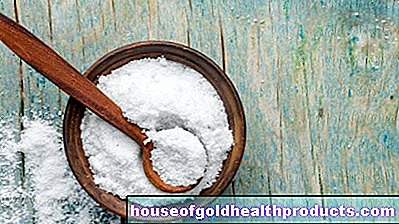
-
Heart patients: active late with enormous effect CHD patients who only become physically active later in life can impressively reduce their risk of premature death. The stake required is not that high after all. Learn more
-
Sudden cardiac arrest also affects healthy people A sudden cardiac arrest can affect anyone - as the latest case of professional footballer Christian Eriksen shows. Calling the emergency doctor is then not enough. Learn more
-
Tattoos: Risk for the heart Infections due to tattoos are not that rare. It becomes problematic when the germs get into the bloodstream. Learn more
-
Even little alcohol gets the heart out of sync Those who drink alcohol regularly develop atrial fibrillation more often. This also applies to healthy people who only drink small amounts. Learn more
- Even in Corona times: If you have heart problems, dial an emergency call!
- Heart failure in women: Late diagnosis, early death
- High blood pressure: better exercise in the morning or in the evening?
- Heart disease: having sex without fear?





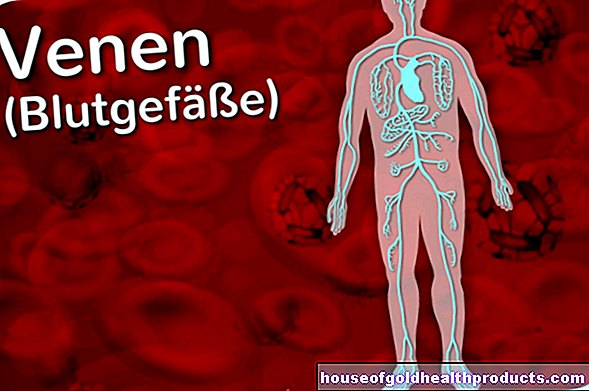
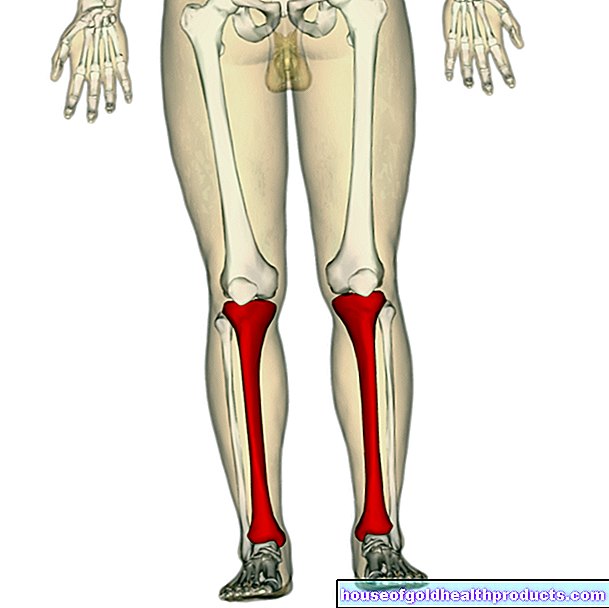
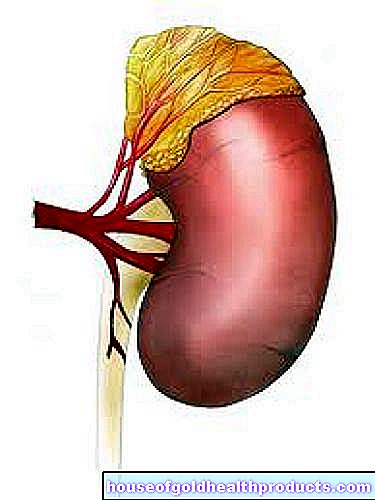


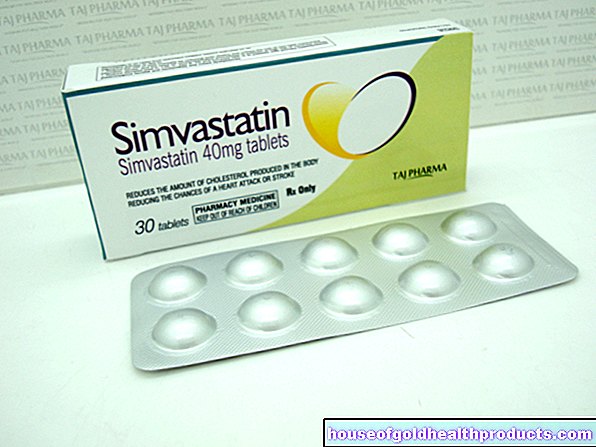

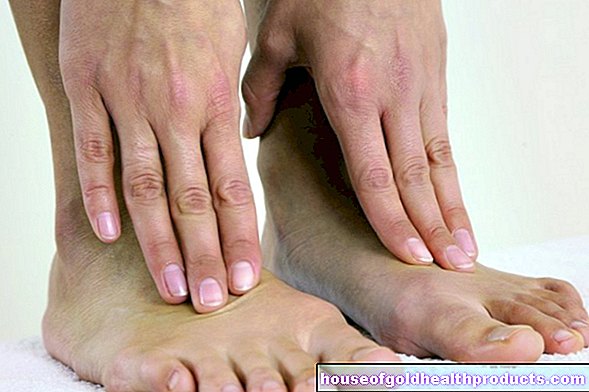




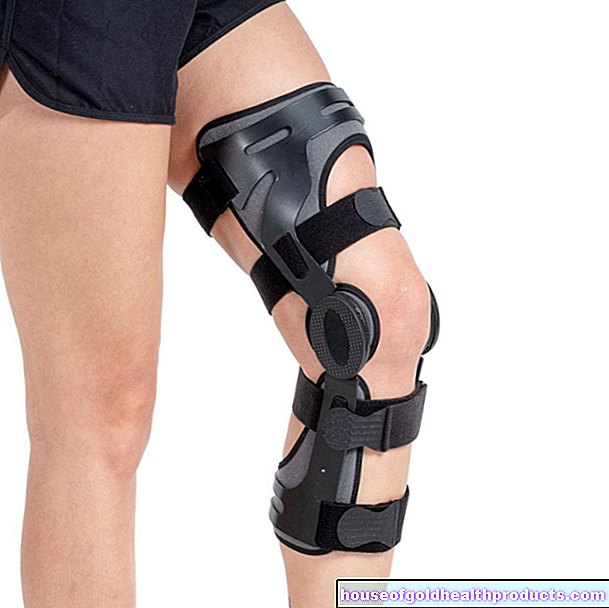







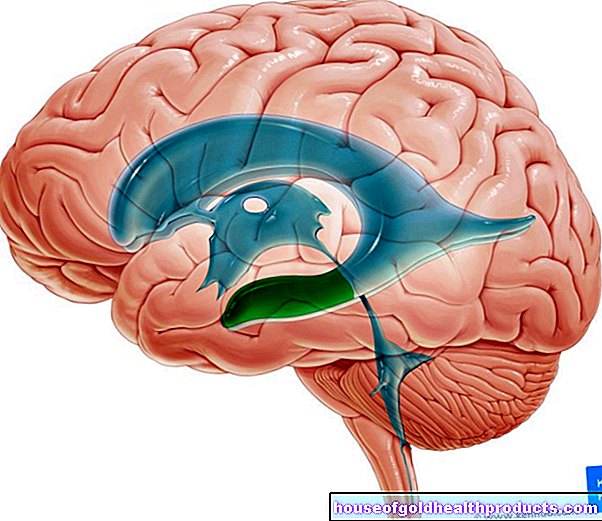

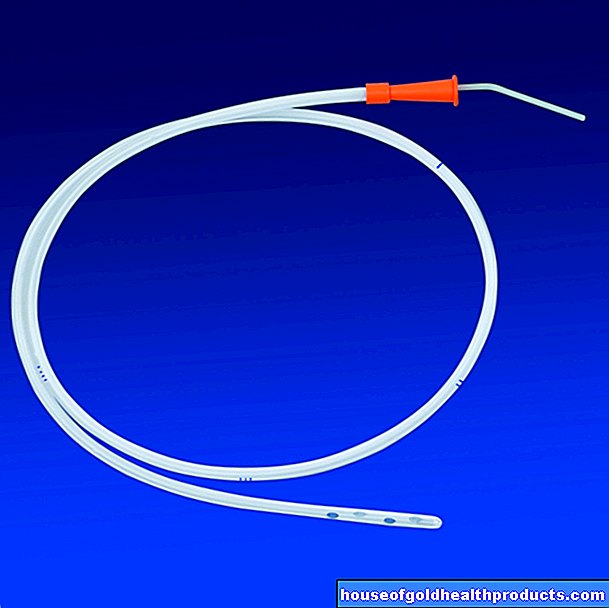


.jpg)
